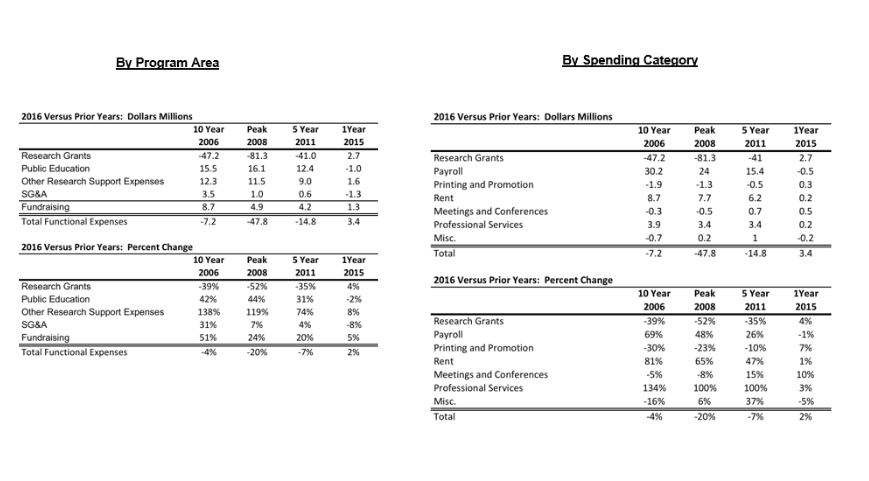SUMMARY:
- JDRF is a powerhouse fundraising organization with nearly all of its money coming from fundraising events and donations.
- JDRF research grant spending has remained at historically low levels for two consecutive years. Only 38% of all income is used for research grants (e.g., money given to scientists for T1D research).
- Research grant spending has declined $81.3 million from its peak in 2008. All other main spending categories have increased.
- Internal operating costs have risen well ahead of the average U.S. rate of inflation over the past 10 years.
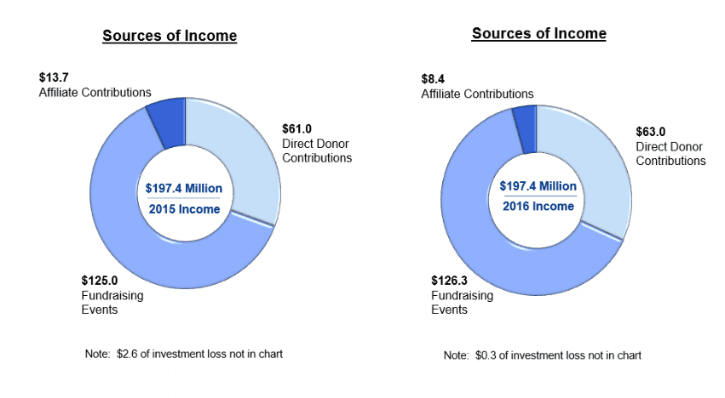
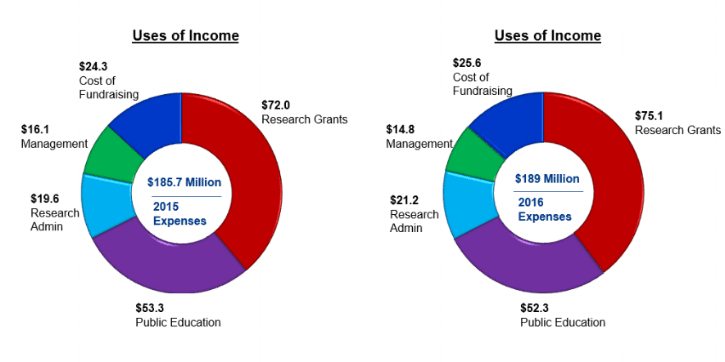
This report analyzes the key sources of income for JDRF and the primary ways this money was used during 2016. All data is sourced directly from JDRF financial statements.
The main takeaway from this year’s report is that research grant spending remains at a 10-year low, and far below the 2008 peak, while all other principle spending categories increased. We continue to believe that JDRF is likely the best-positioned entity in the world to bring fundamental change to people living with type 1 diabetes, but their current research grant spending decline is a cause for concern and raises a key question about organization priorities.
The following are highlights from our review of JDRF income and spending:
INCOME:
- Total income remains largely the same at $197.4 million in 2016 vs. $197.2 million in 2015.
- Donor contributions provided nearly 100% of JDRF income as follows:
- 64% raised through fundraising events.
- 32% raised through direct donor contributions.
- 4% raised from international affiliate contributions.
- JDRF investments lost money for the second year in a row.
See Appendix A for income sources by year.
SPENDING:
- JDRF total spending (expenses) increased from $185.7 million in 2015 to $189 million in 2016.
- Research grant spending recorded a small increase from the prior year but still remains at record-low levels. While grant spending increased from $72 to $75 million between 2015 and 2016, it is still $41 million less than five years ago and $81 million less than the 2008 peak year when research grant funding reached $156 million.
- All other principle non-research costs have increased in recent years as follows and shown in the chart below:
- Fundraising costs have increased by $25.6 million since 2008, up 24%.
- Payroll and Related Expenses have increased by $24 million since 2008, up 48%. Payroll increase is well ahead of inflation -- a cost increase for a return that is not yet evident.
- Public Education costs have increased $16 million, up 44%.
See Appendix B for changes in spending versus prior years, including five and 10-year comparisons.
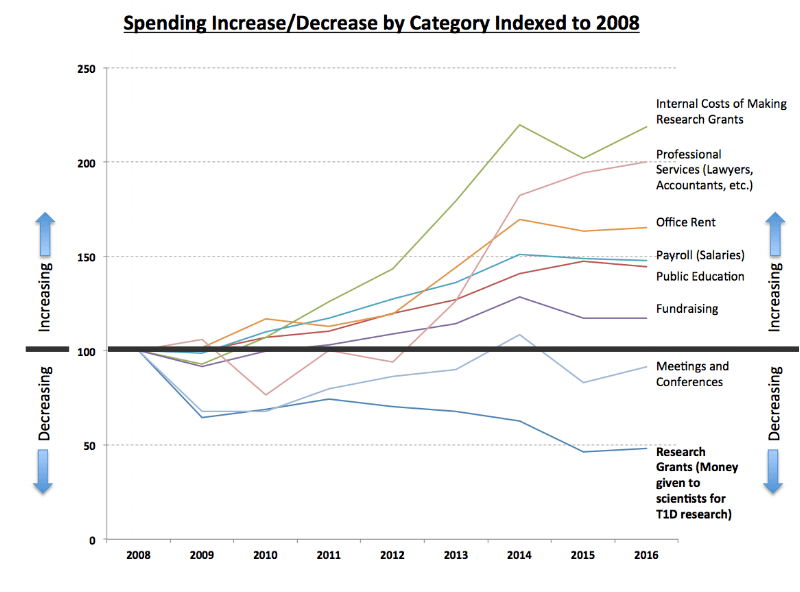
FINAL COMMENTS
Donor surveys conducted over the past five years consistently demonstrate that the number one reason people make a donation or participate in a fundraising event is to support research. As JDRF is fully supported by outside donors, the JDCA believes the spending agenda should match the core wishes of its donor base. Consequently, we believe increases in internal operating costs require a clear explanation, as there is not yet an obvious and transparent return on this investment for donors.
APPENDIX A: REVENUE TRENDS
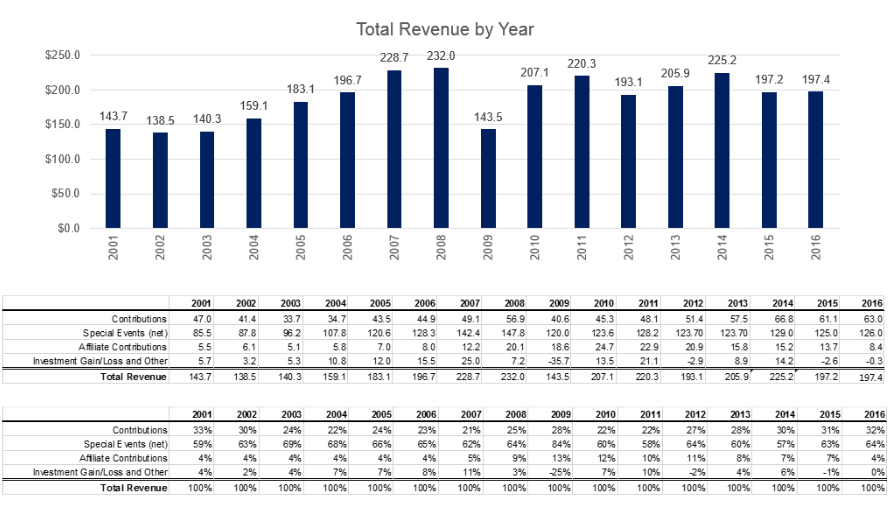
APPENDIX B: EXPENSE TRENDS IN TWO VIEWS OF 2016 VERSUS PRIOR YEARS
This chart shows two different views for JDRF spending trends compared to 2016.
